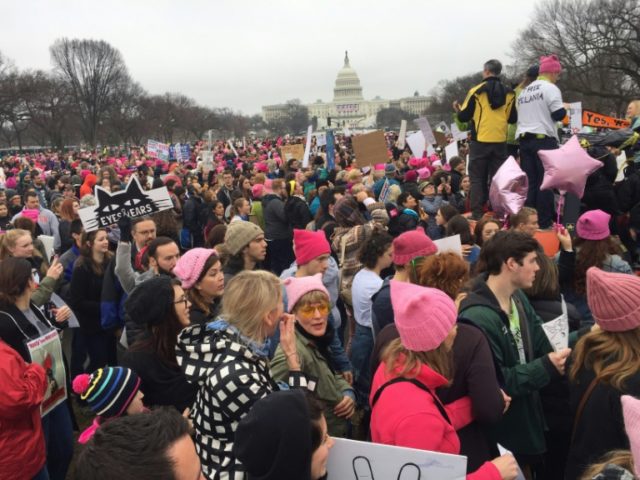The political left and the mainstream media (but I repeat myself), still reeling from the results of the November election, found traction this weekend in the debate over crowd sizes with the new Trump administration.
For their purposes, it matters less what the Trump said, and even less what the crowd sizes were (or why), and more that they were able to create a common filter through which they will interpret subsequent events as they muster an opposition (pretentiously called “resistance”).
First, the facts. The crowd on Inauguration Day was massive, and from the front sections — where this reporter was lucky enough to have seats — it looked like the entire mall was full. Trump — and anyone else seeing the event from that vantage point — could be forgiven for thinking the crowd was at least a million strong, or more.
Taking him to task for speculating about that was simply petty. Press Secretary Sean Spicer was correct: the media were trying to undermine the new president.
At the same time, the crowd did not feel overwhelming. And that was partly by design. The left did its best to scare Trump supporters away by threatening violence. Furthermore, the timing (on a Friday) and the high price of traveling to, and staying in, Washington over a weekend kept many Trump fans at home. A good portion of the anti-Trump protesters who came in from out of town had probably already booked their travel plans in anticipation of a Hillary Clinton win, driving prices up.
The size of the crowds at the respective events was not an issue until the media made it one. In his combative statement to the press on Saturday, Spicer correctly noted that there were some media reports of crowd size that were clearly manipulative. The presence of additional security — again, required because of left-wing threats — did slow entry onto the Capitol lawn and the Mall. (How easy the left often has it: threaten Republicans, then mock them in the media for taking you seriously!)
Most Trump fans were probably happy to see Spicer take the media to task — especially over the false report that President Trump had removed a bust of Dr. Martin Luther King, Jr. from the Oval Office. That bogus story was undoubtedly motivated by the media’s continued quest to find evidence of racism in the Trump camp. It was classic fake news, a clean bust (no pun intended).
So, naturally, media critics focused on the more dubious claim that Trump’s crowds had rivaled Obama’s.
To make his case, Spicer presented what Trump adviser Kellyanne Conway later called “alternative facts” — a harmless, and accurate, term in a legal setting, where each side of a dispute will lay out its own version of the facts for the court to decide. In the heated debate, however, the term quickly became a left-wing meme as a euphemism for “lying” — in much the way that a Bush aide inadvertently gave the mainstream media a badge of honor when he used the phrase “reality-based community.”
Trump was not lying — nor were Spicer, or Conway. They were merely giving their version of events. But CNN and the New York Times explicitly said that Trump had made “false” claims, whether about crowd size or the media, even when his claims were clearly supportable opinion.
It was not enough for journalists to find, and report, the facts independently, and let their readers or viewers decide. They decided to be argumentative — and laid down a marker, “Trump lied,” on Day One (or Two).
In some ways, that was simply the media reverting to what they had done under the Bush administration, the last time they had to cover a Republican in power.
We are likely to hear a lot more about “alternative facts” in the future, stripped of its original (benign) context and used as the foundation for an alternative reality. There is nothing even Trump can do to stop that.
But the new administration could choose its battles more carefully, and perhaps learn to deliver rebukes with a smile.
Joel B. Pollak is Senior Editor-at-Large at Breitbart News. He was named one of the “most influential” people in news media in 2016. His new book, How Trump Won: The Inside Story of a Revolution, is available from Regnery. Follow him on Twitter at @joelpollak.

COMMENTS
Please let us know if you're having issues with commenting.